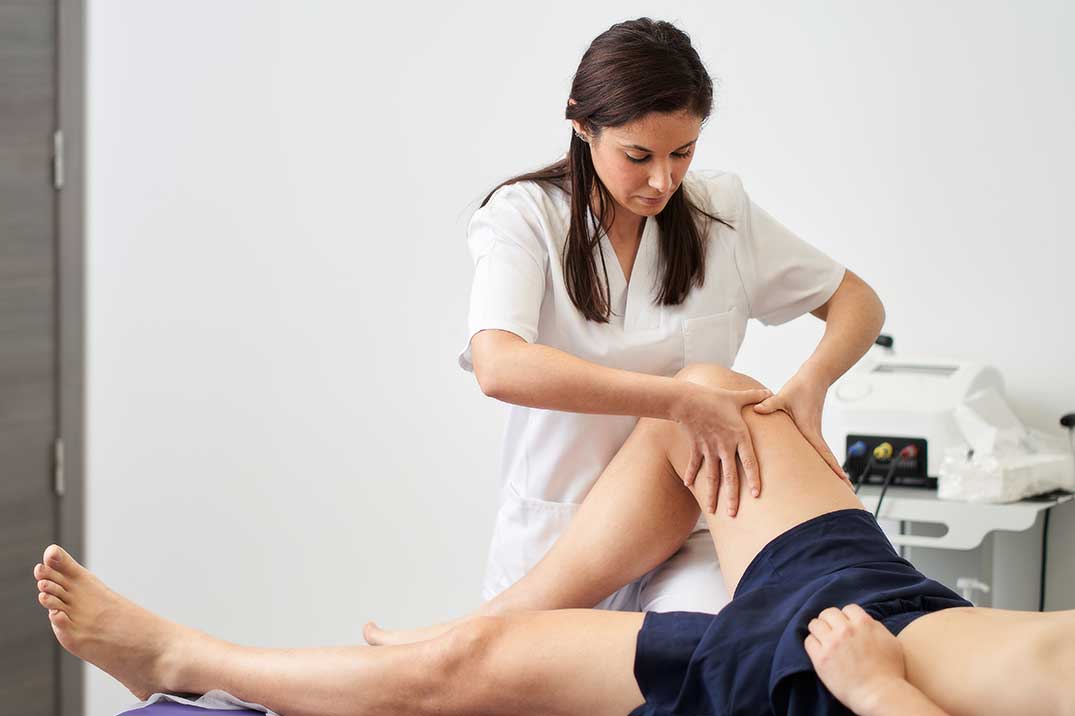Specialist Physical Rehabilitation Techniques for Improved Toughness and Wellness
The domain name of specialist physiotherapy includes a selection of methods designed to boost both strength and total wellness. Central to this method is the understanding of customized treatment plans that integrate resistance training, hand-operated therapy, and useful workouts, each offering distinctive functions in rehabilitation.
Recognizing Physiotherapy Concepts
Physiotherapy concepts are grounded in a holistic understanding of the human body and its feedback to injury and recovery. These concepts stress the interconnectedness of physical, emotional, and social elements that affect an individual's health. An essential aspect of physiotherapy involves analyzing the patient's general condition, recognizing impairments, and developing tailored therapy strategies that help with recuperation and improve feature.
At the core of physiotherapy is the idea in patient-centered treatment, where specialists actively involve individuals in their rehabilitation procedure. This joint approach cultivates inspiration and motivates adherence to treatment methods. Physio therapists make use of evidence-based practices to lead their interventions, making sure that methods and modalities are supported by current study.
Another key concept is the relevance of activity and feature in rehabilitation. Physiotherapists focus on recovering wheelchair, toughness, and control, acknowledging that optimal physical function is essential for general wellness. In addition, education plays a crucial duty in physiotherapy, as professionals overview patients in comprehending their conditions and embracing healthier lifestyle selections.
Key Methods for Toughness Structure
Strength building is a necessary element of rehabilitation, focused on improving muscular tissue function and overall physical efficiency. Physio therapists use various techniques to promote this procedure, tailoring programs to meet private client requirements.
One key technique is resistance training, which involves workouts making use of weights, resistance bands, or body weight to increase muscular tissue stamina. This technique successfully targets specific muscular tissue groups, advertising hypertrophy and endurance. Another vital approach is functional training, which concentrates on workouts that mimic day-to-day tasks, improving the capacity to carry out routine jobs with greater convenience and stamina.
Dynamic overload is also essential in toughness structure. This principle requires slowly boosting the intensity of workouts, whether via added weight, increased repetitions, or modified tempo, ensuring constant adjustment and development of muscular tissue fibers. Furthermore, incorporating plyometric exercises can improve power and explosiveness, which is especially advantageous for professional athletes and energetic people.
Finally, isometric exercises, where muscles contract without transforming size, can enhance stability and strength in specific joints. By integrating these strategies right into individualized rehab programs, physiotherapists can effectively sustain patients in attaining their strength-building objectives, inevitably causing improved useful outcomes and boosted lifestyle.
Benefits of Guidebook Therapy
Integrating a variety of restorative approaches improves the general efficiency of rehab programs, and guidebook therapy stands out as a useful method. This hands-on intervention is instrumental in relieving pain, boosting movement, and promoting the healing procedure.
Manual treatment incorporates different methods, including soft cells mobilization, joint manipulation, and myofascial launch (physio north lakes). These methods aim to reduce muscular official statement tissue stress, improve blood circulation, and recover practical motion. By resolving soft cells constraints and joint dysfunctions, manual treatment can significantly contribute to discomfort alleviation and boosted series of motion
Additionally, the healing touch included in hands-on therapy fosters a solid patient-provider connection, promoting browse around here trust fund and convenience. This emotional link can improve patient adherence to recovery protocols and overall satisfaction with their treatment.
Research has actually shown that manual treatment can be specifically efficient for problems such as low pain in the back, neck pain, and stress frustrations. physio north lakes. As a corresponding therapy, it can be incorporated with various other methods, such as workout or techniques, to enhance end results. Eventually, the advantages of hands-on therapy emphasize its necessary function in thorough physiotherapy therapy strategies, supporting both strength enhancement and general wellness
The Duty of Workout Prescription
Exercise prescription plays a critical role in the rehabilitation procedure, offering as a foundational aspect for achieving optimum patient outcomes. It includes the organized preparation of exercises customized to the private demands and capabilities of clients. By taking into consideration variables such as age, physical condition, and details wellness objectives, physio therapists create tailored workout programs that cultivate recovery and boost total physical well-being.

Additionally, exercise prescription fosters patient involvement and ownership of the rehab process. By proactively joining their recuperation, people are more probable to abide by prescribed programs, causing improved results. In summary, workout prescription is a crucial part of physical rehabilitation, providing organized, customized strategies that sustain individuals in their journey towards improved stamina and total wellness.
Integrating Mindfulness in Recuperation
The incorporation of mindfulness techniques right into recovery techniques provides an all natural strategy to recuperation that matches conventional exercise prescription. Mindfulness, specified as the deliberate concentrate on look at this website today moment, can significantly enhance patient outcomes by promoting higher awareness of physical experiences and moods. This heightened recognition permits individuals to better recognize pain signals and stress feedbacks, promoting extra reliable self-regulation.
Research study has revealed that incorporating mindfulness strategies, such as reflection and concentrated breathing, can lower anxiousness and improve psychological strength throughout recovery. These methods equip individuals to handle pain and cultivate a favorable state of mind, which is essential for adhering to work out routines and attaining long-lasting rehabilitation goals.
Physiotherapists can include mindfulness by assisting individuals through short mindfulness exercises before or after physical therapy sessions. This combination not only aids in physical recovery yet likewise promotes overall mental health. Mentor people to engage in mindfulness during workouts can improve their emphasis, guaranteeing that motions are executed with greater precision and objective.
Conclusion
